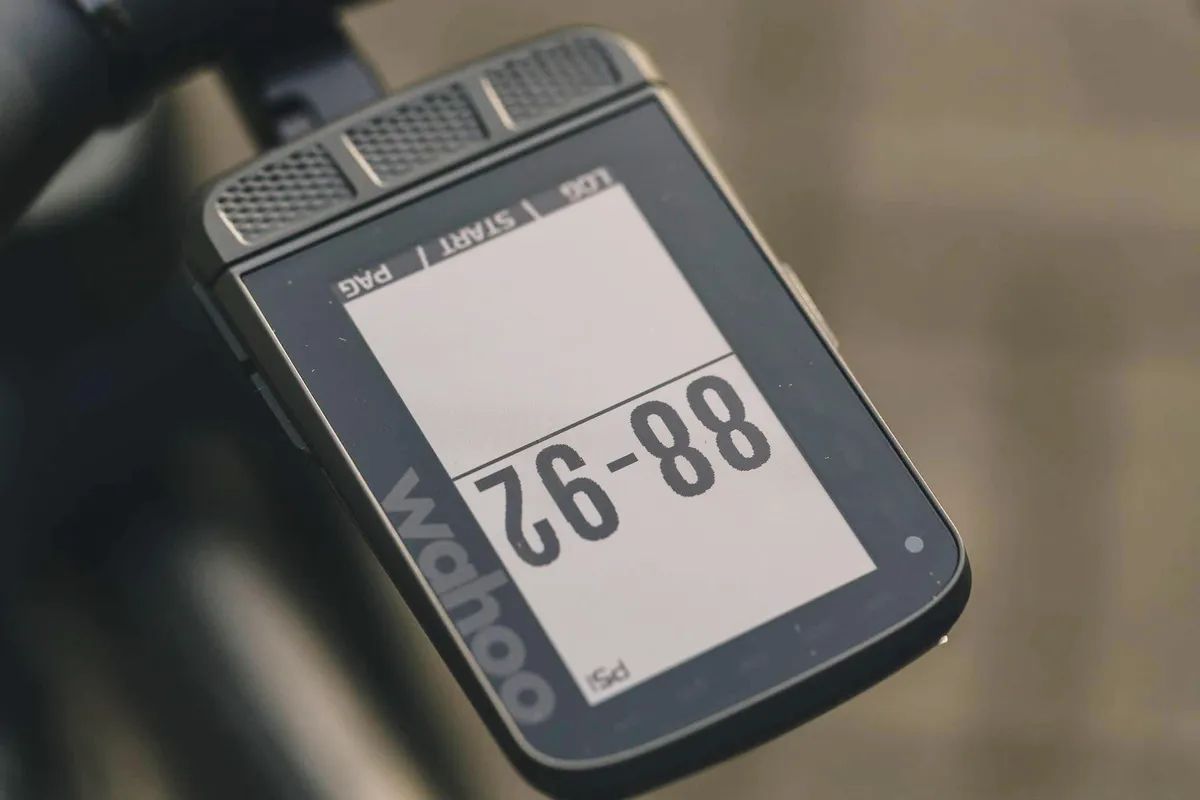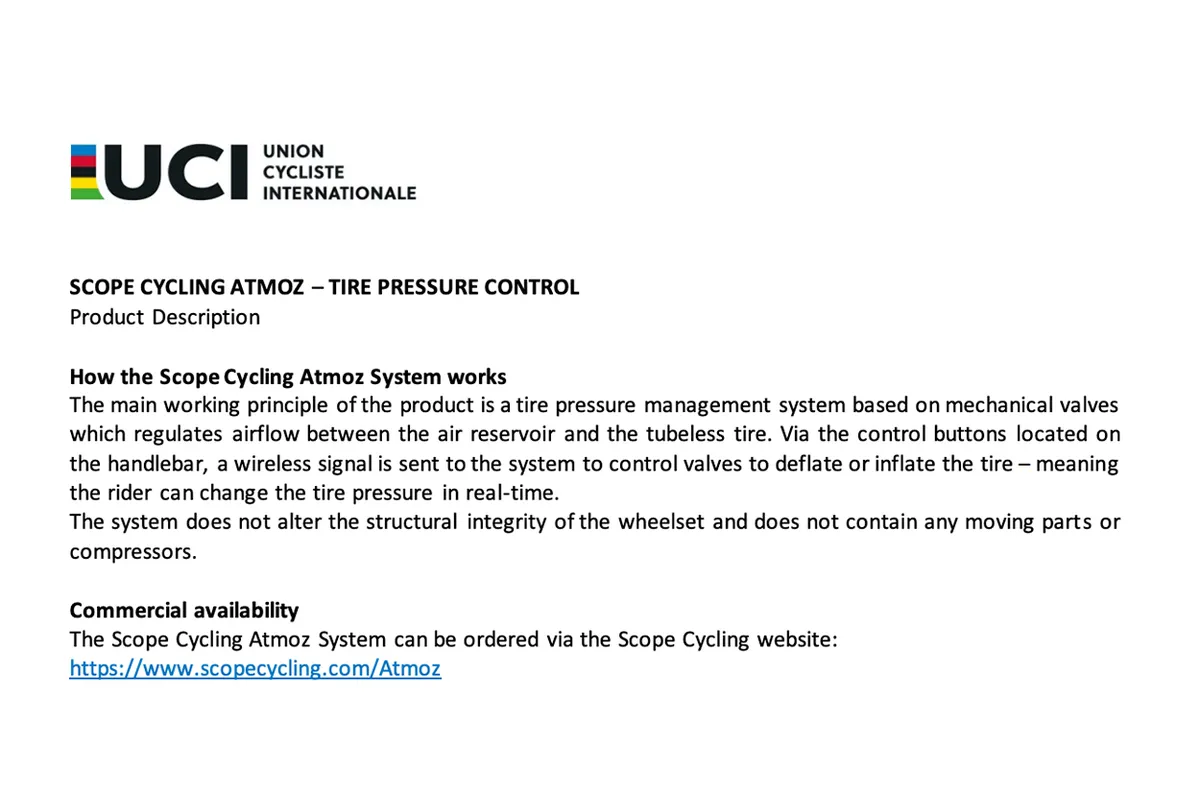Dutch wheel brand Scope has announced the Atmoz tyre pressure control system, which will reportedly be used by a WorldTour team at the upcoming edition of Paris-Roubaix, the toughest cobbled classic on the professional calendar.
The device, which costs €3,998, can be added to “any 29in or 700c wheel” and is said to enable a rider to manually adjust their tyre pressure while riding, using two remote control buttons.
Scope claims such adjustments can provide a gain of “up to 30 wattage [sic] of reduced rolling resistance, combined with improved comfort and safety in rough and wet conditions”.
In a statement released on 11 April 2022, the Union Cycliste Internationale (UCI) confirmed “built-in management systems for tyre pressure are authorised in professional road cycling”, paving the way for teams to use such devices in races.
According to a report by Cyclingnews, Team DSM will use the device at Paris-Roubaix, potentially gaining a significant advantage over its competitors.
How does the Scope Atmoz tyre pressure control system work?
The Scope Atmoz tyre pressure control system is a hub-mounted device that connects to the valve stem of a tubeless tyre via a small hose (which can be taped to a spoke).
According to the UCI’s statement of approval, the Atmoz uses “mechanical valves, which regulates airflow between the air reservoir and the tubeless tire”.

Using two remote control buttons, which communicate with the Atmoz wirelessly, a rider can control the valves to either inflate or deflate the tyre as they ride.
According to photographs on Scope’s website, the device can also be paired with Wahoo bike computers to display real-time tyre pressure information.
The UCI’s statement also says “the system does not alter the structural integrity of the wheelset and does not contain any moving parts or compressors.”

It notes the system is commercially available via Scope’s website, for the princely sum of €3,998.
It’s not clear if that price includes a device for each wheel, or if you’ll need to double that price in order to control the pressure of both tyres on your bike.
Scope also doesn’t note how quickly (or slowly) the Atmoz is capable of inflating or deflating a tyre, or how much the device weighs, but we have asked for further details and will update this article when we receive a response.

Why is this an important innovation?
Optimising a rider's tyre pressure for the dramatic changes in road conditions experienced in races such as Paris-Roubaix, the Tour of Flanders or Strade Bianche, has always been about compromise.
A tyre pressure that offered the lowest rolling resistance on tarmac would be too high for optimum comfort and grip on the cobbled or gravel sections of a race, and vice versa.
With riders and teams only able to set tyre pressure in advance of an event, this meant finding a precise tyre pressure for every individual rider, which offered the best balance of performance on all of the various surfaces covered during the race.
Inevitably, there would always be some kind of trade-off between speed on tarmac and comfort and grip off it.
If riders are able to quickly adjust their tyre pressures on the fly, however, that will potentially offer a huge advantage.

Riders could, in theory, set their tyre pressures at the optimum point for lowest rolling resistance on tarmac to begin the race (even so-called ‘cobbled classics’ such as Paris-Roubaix typically begin with long sections of tarmac roads before eventually hitting cobbled sections later in the race).
They could then adjust their tyre pressures down to predetermined ideal pressure for a cobbled or gravel section, before going back up to the optimum tarmac pressure after it has been completed, and so on.
Given the lengths teams go to in order to find tiny gains, a 30-watt performance difference (if Scope’s claims are to be believed) could be a game-changer for these types of races, if it works as advertised.
Though some riders may be concerned about anything that adds weight to their race bike, given the mostly flat nature of the course at Paris-Roubaix, any additional weight would have a negligible effect on performance.
